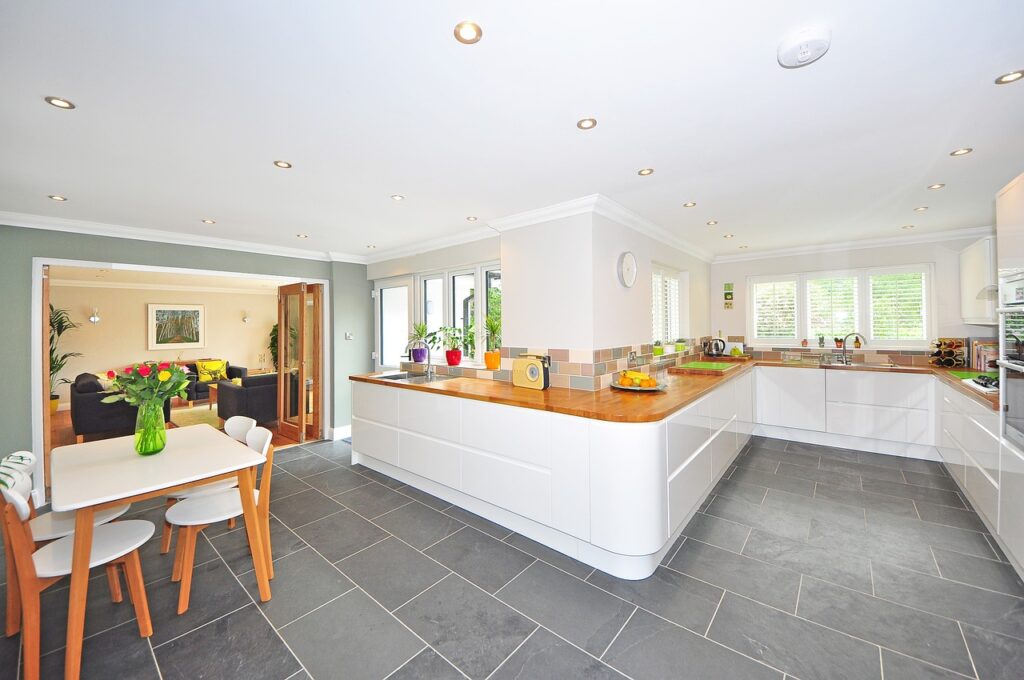When it comes to upgrading the comfort and luxury of your home, heated floors are a feature that can truly make you feel like you’re walking on sunshine. These radiant heating systems are not only a cozy indulgence but also a practical addition that can enhance your home’s energy efficiency. Before you embark on this warm and toasty journey, let’s explore the key factors you should consider when thinking about installing heated floors in your home.
- Types of Heated Flooring:
There are two primary types of heated flooring systems: electric and hydronic.
Electric Heated Floors: These systems use electric cables or mats installed beneath the flooring surface. They are generally easier and less expensive to install, making them a popular choice for smaller areas like bathrooms or kitchens.
Hydronic Heated Floors: These systems use a network of hot water pipes to distribute heat. While they are more complex and costly to install, they are highly energy-efficient and are often preferred for larger areas and whole-house heating.
- Flooring Material Compatibility:
Not all flooring materials are suitable for heated floors. While most common flooring types can work, materials like hardwood, tile, and stone are particularly compatible. It’s essential to consult with a professional to ensure your chosen flooring material can withstand the heat without warping or damage. - Zoning and Thermostat Control:
Heated flooring systems can be divided into zones, allowing you to control the temperature in different areas of your home. This feature not only adds convenience but also contributes to energy savings by only heating the rooms you’re using. - Installation and Cost:
The installation of heated floors requires careful planning and professional expertise. Consider the installation cost, including labor and materials, as well as potential modifications to your home’s structure. While it’s an investment, the energy efficiency and comfort benefits often make it worthwhile. - Energy Efficiency:
Heated floors can be an energy-efficient heating solution, particularly hydronic systems. However, it’s important to consider the long-term energy costs and efficiency, as well as any potential impact on your home’s overall energy consumption. - Maintenance and Repairs:
Like any home system, heated floors require regular maintenance. Be prepared to invest in occasional servicing to ensure optimal performance. Also, consider the potential repair costs in the event of system malfunctions. - Flooring Height and Transition Strips:
Heated floors can add some height to your floor, which may necessitate adjustments to doors, trim, and other fixtures. Transition strips may also be needed when transitioning between heated and non-heated areas. - Programmable Thermostats:
To maximize the comfort and energy efficiency of your heated floors, invest in programmable thermostats. These devices allow you to set schedules to ensure your floors are warm when you need them and conserve energy when you don’t. - Compatibility with Your Existing HVAC System:
Ensure that your heated floors can work seamlessly with your existing heating and cooling systems. This integration can provide more comprehensive climate control. - Professional Consultation:
Before you make any decisions, consult with a professional who specializes in heated flooring. They can assess your home’s specific requirements and recommend the most suitable system and installation approach.
Heated floors can transform your living space into a warm and cozy oasis, providing unmatched comfort and energy efficiency. By considering these key factors, you can make an informed decision that ensures your home remains comfortably warm and welcoming, even on the coldest of days. Say goodbye to chilly toes and embrace the luxury of radiant warmth underfoot!



